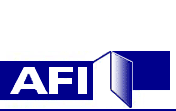Appendix F: Marketing, Recruitment, and Retention of Participants |
|||
Many AFI Project administrators have found that the initial time required to do the marketing, attract attendees to orientation, and actually enroll participants is longer than they anticipated. Program staff sometimes struggle with explaining IDAs and AFI Project guidelines to the public, including to potential participants. When marketing an AFI Project, the general rule is to keep things simple and clear so that people will be attracted to the project and potential participants will fully understand their roles and responsibilities.
AFI Projects often find that they lose participants between initial recruitment (an orientation session or during a phone inquiry) and the time for account opening. Attrition may occur because of a breakdown between marketing activities and reaching the intended audience. Public service announcements on local radio stations may be useless, for example, if the people they draw to orientation sessions are ineligible for the program. In order to anticipate recruitment challenges, make sure that the initial assessment of your project's target population (i.e., the needs assessment) is as complete as possible. Following are some helpful questions to consider when planning your project's marketing and recruitment strategies:
- What will your target population likely wonder about the IDA concept when they first hear of it? If you are unsure of the answer, talk to program staff at your organization or a partnering agency or speak to members of the target population directly in focus groups or even informal, ad hoc conversations.
- Are the operational procedures and policies for your AFI Project established and clearly communicated so that staff and participants have a clear understanding of how to navigate the elements of the project?
- Are written documents describing the project's policies and procedures clear and simple? Try testing them with a variety of folks of different ages and reading levels.
- After you have described the AFI Project to potential participants, can they easily describe back to you the benefits of the IDA ? Can they tell you the process for applying to be a participant in your AFI Project?
- Do the organizations with which your agency is partnering for the AFI Project clearly understand their roles and responsibilities? Are those partners in good standing with the target population? Are they ready to launch this project with you?
- Has you organization assessed the market conditions in your community to determine whether it would be feasible for participants to purchase any of the three allowed AFI Project assets (first home, higher education, small business)? Does your organization have a plan to tap other resources for additional support for participants if needed as they navigate the purchase process?
- To limit attrition, will your agency sponsor financial literacy and education sessions and asset-specific training at various times of the day and often enough to keep your project participants on track with the savings and training time line? Are you or your agency concerned that workshop sessions may begin late in the program period, get overbooked, or be offered too few times to meet participant needs?
- Has your organization developed contingency plans for delays in recruitment, attrition during the savings period, and participant delays in making a successful asset purchase once they have met program requirements?
Some projects expect to tap into their current client base. Do not assume that all of your current service population is ready and interested in an IDA, even though they may meet basic eligibility guidelines. A family in crisis or without stable employment may need to address those matters before taking up the long-term IDA commitment.

 PDF Version (26KB)
PDF Version (26KB)